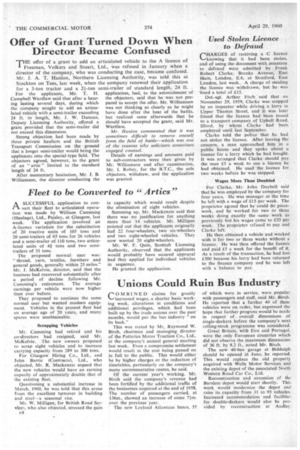Fleet to be Converted to " Artics"
Page 42

If you've noticed an error in this article please click here to report it so we can fix it.
A SUCCESSFUL application to eonrA vert their fleet to articulated operation was made by William Cumming (Haulage). Ltd., Paisley, at Glasgow, last week. The application involved an A-licence variation for the substitution of 20 tractive units of 105 tons and 20 semi-trailers of 65 tons for 26 vehicles and a semi-trailer of 110 tons, two articulated units of 41 tons and two semitrailers of 3.1tons.
The proposed normal user was: "thread, yarn, textiles, furniture and general goods, generally within 25 miles." Mr. J. McKelvie, director, said that the business had recovered substantially after a period of decline following Mr. Cumming's retirement. The average earnings per vehicle were now higher than ever before.
They proposed to continue the same normal user but wanted modern equipment. Vehicles in the present fleet had an average age of 20 years, and many spares were unobtainable.
Scrapping Vehicles
Mr. Cumming had retired and his co-directors had resigned, said Mr. MeKelvie. The new owners proposed to scrap eight vehicles and to increase carrying capacity from 289 to 300 tons.
For Glasgow Hiring Co„ Ltd., and John Barrie (Contracts), Ltd., who objected, Mr. R. Mackenzie argued that the new vehicles would have an earning capacity of approximately double that of the existing fleet.
Questioning a substantial increase in March. 1960. he was told that this arose from the excellent turnover in building and steel—a seasonal rise.
Mr. W. Milligan, for British Road Service'., who also objected, stressed the gain c4 in capacity which would result despite the elimination of eight vehicles.
Summing up, Mr. Mackenzie said that there was no justification for anything more than 14 vehicles. Mr. Milligan pointed out that the applicants originally had 22 four-wheelers, two six-wheelers and two eight-wheeled vehicles. They now wanted 20 eight-wheelers.
Mr. W. F. Quin, Scottish Licensing Authority, observed that the applicants would probably have secured approval had they applied for individual vehicles in sequence.
He granted the application.












































































































